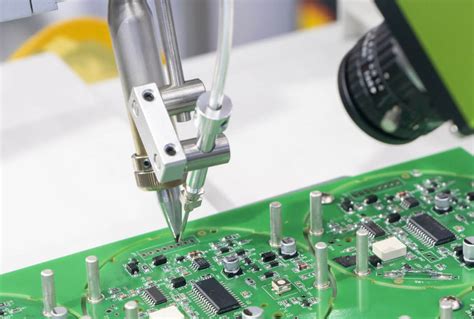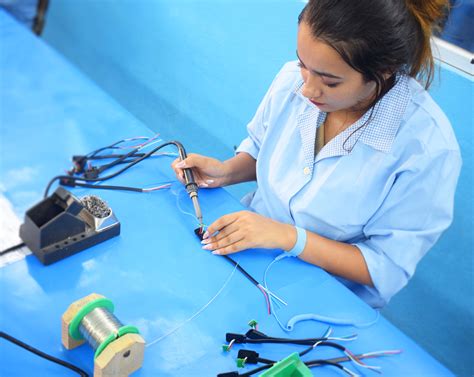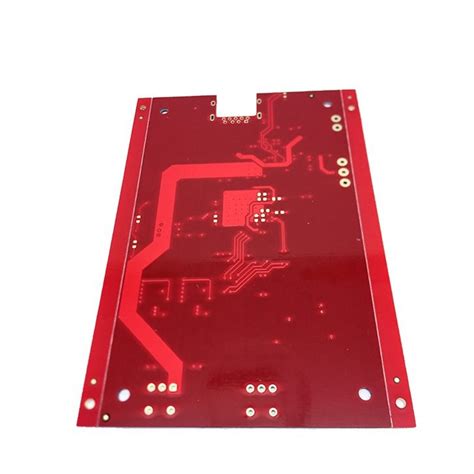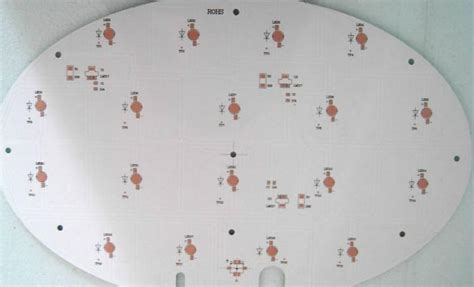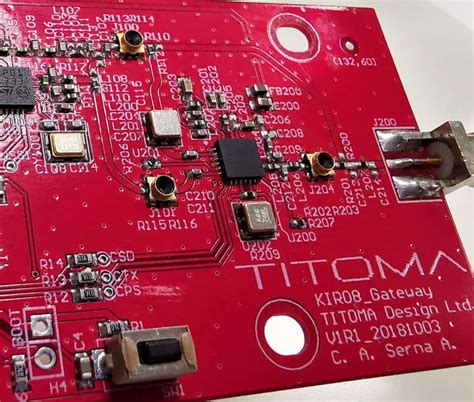Unlocking Efficiency: The Art of Double Layer PCB Manufacturing
Key Takeaways
Understanding the fundamentals of double layer PCB manufacturing can significantly enhance your projects. You should prioritize design efficiency right from the beginning, as it plays a crucial role in streamlining operations, reducing wastage, and minimizing errors throughout the production phase. When considering material selection, opting for high-quality substrates not only ensures better performance but also supports longevity, which can be critical for your PCB manufacturing business. Additionally, you should keep an eye on the evolving landscape of cost reduction techniques. By staying informed about prevalent trends and utilizing tools that automate tasks, you are likely to find ways to lower the overall PCB manufacturing cost without sacrificing quality. Moreover, collaborating with reputable PCB manufacturing companies can provide you access to advanced technology and expert insights that can further solidify your project’s success. Remember that addressing key challenges upfront will mitigate risks associated with double layer production and ultimately lead to superior outcomes in your electronic designs.
Unlocking Design Efficiency in Double Layer PCB Manufacturing
Achieving optimal design efficiency in double layer PCB manufacturing is crucial for ensuring that your projects meet both performance and cost expectations. When working with PCB manufacturing companies, the initial step is to focus on effective layout design. This includes maximizing space utilization while ensuring that signal integrity and thermal management are taken into account. Utilizing software tools designed for PCB manufacturing can greatly enhance your ability to visualize and optimize designs, allowing for efficient routing of traces while minimizing potential interference.
Moreover, selecting the right materials is vital; high-quality materials can significantly influence the PCB manufacturing cost while maintaining performance standards. The integration of flexible substrates, for instance, can offer innovative solutions that not only streamline the manufacturing process but also enhance the adaptability of your designs.
Lastly, keep in mind that continuous communication with your selected PCB manufacturing business is essential. Providing feedback during the design phase allows for quick adjustments and reduces lead times, contributing further to overall efficiency. By prioritizing these strategies in your design process, you can unlock significant improvements in both quality and cost-effectiveness within your double layer PCB manufacturing endeavors.
Material Selection Strategies for Double Layer PCBs
Selecting the right materials for double layer PCB manufacturing is crucial for achieving optimal performance and functionality. It starts with understanding the various substrates available, such as FR-4, which is widely used due to its excellent thermal and electrical properties. Considerations around pcb manufacturing companies often highlight the importance of choosing materials that not only meet technical specifications but also align with your project’s budget. When evaluating your options, factor in the pcb manufacturing cost associated with different materials, as premium choices can significantly impact your overall budget.
Another key aspect is ensuring that the dielectric constant of your chosen materials complements the intended application, enhancing signal integrity and reducing interference. As you dive deeper into material selection, remember that certain materials can improve thermal conductivity, which is essential for heat dissipation under high loads.
It’s worth considering an alternative approach where you collaborate with experienced pcb manufacturing companies that can guide you in selecting materials best suited for your specific requirements. This collaboration can provide insights into recent advancements in material science, such as low-loss dielectrics or halogen-free epoxy options.
Remember to keep an eye on regulatory requirements concerning material safety, especially if you’re venturing into sectors like aerospace or medical equipment where compliance is non-negotiable.
“The choice of material can make or break your pcb manufacturing business; it’s not just about function, it’s about reliability and cost-efficiency.”
By selecting appropriate materials right from the outset, you can unlock significant efficiencies in production processes while also enhancing quality and performance in your double layer PCBs. The strategic selection of materials not only advances the quality of products but also allows for reductions in long-term operational costs—a win-win situation in today’s marketplace focused on lean production strategies.
Optimizing Production Processes for Enhanced PCB Quality
When it comes to double layer PCB manufacturing, optimizing your production processes is critical for achieving greater quality and ensuring cost-efficiency. One effective strategy is to streamline workflow by employing advanced automation technologies. These technologies can significantly reduce human error, thus enhancing the overall quality of the products. Engaging with reputable PCB manufacturing companies can also provide insights into best practices for production efficiency and lead to improved output.
Furthermore, it’s vital to select high-quality materials that meet your project specifications. This not only boosts the reliability of your PCB manufacturing but also minimizes waste, ultimately lowering your PCB manufacturing cost. Implementing a robust quality assurance framework throughout the production stages helps identify potential issues early, ensuring that only top-quality products reach the end user.
The integration of data analytics into your production processes allows you to monitor performance metrics continuously and make necessary adjustments in real time. This approach not only enhances quality but also contributes to sustainability in your PCB manufacturing business, as resources are used more effectively.
| Parameter | Impact on Quality | Best Practices |
|---|---|---|
| Material Quality | Directly influences durability | Source from reputable suppliers |
| Production Workflow | Reduces errors and defects | Automate repetitive tasks |
| Quality Assurance Checks | Early detection of issues | Implement periodic audits |
By focusing on these aspects, you can significantly enhance the quality of your double layer PCBs while also optimizing costs and production timelines. This balanced approach will position you favorably in a competitive market where quality cannot be compromised.
Cost Reduction Techniques in Double Layer PCB Manufacturing
In the pcb manufacturing landscape, reducing costs while maintaining quality can be a challenging endeavor. To effectively manage pcb manufacturing costs, it is essential to optimize various aspects of your pcb manufacturing business. One of the key techniques is streamlining your design processes. By utilizing advanced design software that allows for better simulation and optimization, you can minimize design revisions and accelerate turnaround times, ultimately lowering costs.
Additionally, selecting the right materials is crucial; using high-quality yet cost-effective materials can significantly impact the overall expenses. As you collaborate with reputable pcb manufacturing companies, ensure that you are aware of bulk purchasing options for materials, which can lead to substantial savings.
Another effective strategy is to incorporate automation into your production process. Automation reduces labor costs and enhances precision in assembly, which can significantly improve efficiency and quality in your double layer PCB projects. Furthermore, consider actively seeking partnerships or engaging in lean manufacturing practices that focus on waste reduction throughout the production cycle.
By employing these cost reduction techniques, you position your projects for not only improved reliability but also enhanced profitability in an ever-competitive market.
Key Challenges in Double Layer PCB Production and Solutions
In the realm of double layer PCB manufacturing, various challenges can arise, impacting the overall efficiency and cost-effectiveness of your projects. One significant obstacle is the complexity involved in designing an optimized layout that accommodates electrical performance while minimizing pcb manufacturing costs. Charting a course through this intricate design landscape often demands collaboration with experienced pcb manufacturing companies that understand your specific needs. Moreover, material selection plays a crucial role; choosing suboptimal materials can lead to unexpected complications during production, translating to higher costs and longer lead times. Another challenge lies in quality assurance; defects during production not only waste resources but can also impede your pcb manufacturing business reputation. Implementing rigorous testing protocols throughout the process helps mitigate these risks. Finally, staying abreast of technological advances is imperative; embracing innovations in production techniques can streamline processes and enhance product quality, ensuring that you remain competitive in a rapidly evolving market. Addressing these challenges through strategic planning and collaboration will significantly bolster the success of your double layer PCB projects.
Innovative Technologies Shaping Double Layer PCB Manufacturing
In the ever-evolving field of pcb manufacturing, innovative technologies play a crucial role in enhancing the efficiency and effectiveness of processes. As you explore the landscape of pcb manufacturing companies, you’ll discover that many are integrating advanced tools and methodologies to streamline operations. Techniques such as advanced automation and machine learning are becoming increasingly popular, allowing for more precise pcb manufacturing with reduced waste and errors. The advent of automated visual inspection systems is also transforming quality control, ensuring that each board meets stringent specifications before it proceeds to assembly. Moreover, the adoption of new materials, such as high-speed laminates, is not just improving performance but also influencing pcb manufacturing cost positively by mitigating delays in production. Engaging with these technological advancements will not only elevate your understanding but will also empower your pcb manufacturing business to remain competitive in a market that demands both quality and efficiency. Embracing these innovations is essential for meeting customer expectations while navigating the complexities associated with double layer PCB production.
Best Practices for Testing and Quality Assurance in Double Layer PCBs
Ensuring the highest quality in double layer PCB manufacturing requires a robust testing and quality assurance framework. Initially, you should incorporate thorough design reviews, which help identify potential issues before the manufacturing phase. Choosing reliable PCB manufacturing companies that prioritize quality control can significantly enhance the likelihood of successful production. Implementing various testing methods, such as automated optical inspection (AOI) and functional testing, allows for early detection of defects, minimizing the PCB manufacturing cost associated with reworks or scrap.
Additionally, creating a comprehensive checklist for all stages of production can guide you in maintaining consistent quality. You might also consider environmental testing, which evaluates how your PCB performs under different conditions, ensuring durability and reliability in its intended application. Engaging with a PCB manufacturing business that actively seeks feedback on their processes allows you to stay informed about best practices and advancements in technology that can improve testing efficacy. Ultimately, combining these best practices will not only enhance the quality of your double layer PCBs but also contribute to more efficient workflows and substantial cost savings in your projects.
Future Trends in Double Layer PCB Design and Manufacturing
As you navigate the evolving landscape of double layer PCB manufacturing, understanding emerging trends is essential for staying competitive in the PCB manufacturing business. Many PCB manufacturing companies are now prioritizing the integration of advanced technologies, such as automation and artificial intelligence, to streamline their production processes. This shift not only enhances operational efficiency but also provides real-time data that aids in decision-making. In addition, environmentally sustainable materials are making their way into standard practices; these materials can significantly lower PCB manufacturing costs while meeting increasing regulatory requirements. Another pivotal trend is the rise of modular designs, enabling flexibility and customization to cater to diverse consumer needs. By adopting these innovative approaches, you stand to improve quality and resilience in your products, ensuring your designs are not just competitive but also future-ready. As you plan for upcoming projects, embracing these trends will empower your efforts in double layer PCB manufacturing, driving growth and enhancing overall project outcomes.
Conclusion
In your journey through the realm of double layer PCB manufacturing, you’ve explored various facets that define quality and efficiency in this essential process. You now understand that focusing on design efficiency plays a crucial role in creating effective and functional PCBs. Material selection is another pillar; using the right materials not only enhances performance but can significantly impact your overall PCB manufacturing cost. Additionally, optimizing your production processes is key to improving both the quality of your prints and the speed of their delivery, empowering you to stay competitive among leading PCB manufacturing companies.
As you reflect on cost reduction techniques, consider how even minor adjustments in your methods can yield substantial savings. You’ve been equipped to identify and navigate key challenges arising in the double layer PCB production landscape, enabling you to devise practical solutions. The influence of innovative technologies continues to reshape the industry, offering new possibilities for streamlining your PCB manufacturing business.
Moreover, best practices for testing and quality assurance will ensure that your products consistently meet safety and performance standards. Looking forward, embracing future trends will not only prepare you for shifts in demand but also enhance your strategic planning. In this ever-evolving field, staying informed will be invaluable as you aim for excellence in every aspect of your PCB projects.
FAQs
What is double layer PCB manufacturing?
Double layer PCB manufacturing refers to the process of creating printed circuit boards with two conductive layers. These boards facilitate more complex circuit designs while maintaining a compact footprint.
How does material selection impact PCB manufacturing cost?
Material selection plays a crucial role in PCB manufacturing cost. Choosing the right substrates and copper weights ensures that your PCB manufacturing business achieves a balance between quality and affordability.
What are some common challenges in double layer PCB production?
Challenges in double layer PCB production can include layer alignment, delamination, and via plating issues. Addressing these challenges improves overall quality and helps maintain competitive pricing.
Why should I consider using specialized PCB manufacturing companies?
Utilizing specialized PCB manufacturing companies often results in higher-quality products and optimized production processes. Their expertise can lead to significant time and cost savings in your projects.
What innovative technologies are emerging in the field of PCB manufacturing?
Emerging technologies in PCB manufacturing, such as advanced automation, artificial intelligence, and machine learning, are streamlining operations. These innovations enable better quality control and reduce overall costs.


